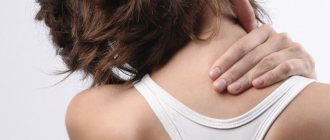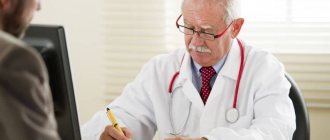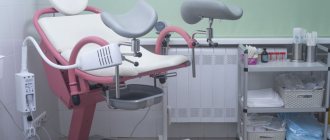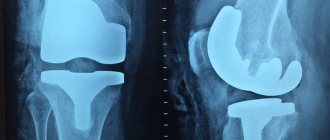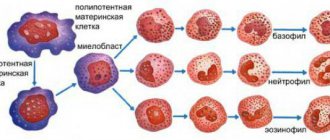Reflexology is a science that deals with the development of methodological complexes consisting of various techniques aimed at treating many diseases through targeted impact on certain areas of the body. Acupuncture, various types of massages, electropuncture - all these types of therapy are taught by one specialist - a reflexologist. Reflexology is often used in therapy, pediatrics, neuropathology, dentistry, obstetrics, gynecology, narcology, psychiatry and other branches of medicine.
Online Booking with a Reflexologist
What is a reflexologist?
A reflexologist is a medical specialist who treats various diseases using the method of influencing active points - acupuncture. The points that a specialist of this type influences are, as a rule, interconnected with the internal organs and systems of the body. Some of the techniques that a reflexologist uses are vaguely reminiscent of manual therapy. This method of treatment is very common, as it does not involve taking medications and has a small number of contraindications, which means it can be used for any age group.
Reflexology cures many diseases and pathological conditions; during the procedures, blood circulation is activated in areas exposed to therapy, hormonal levels are stabilized and tissue trophism is improved.
A reflexologist is a medical worker who has graduated from a higher medical institution and received the specialty “Reflexotherapist,” which was introduced by the Ministry of Health back in 1998. A doctor of this medical specialty can work in a hospital structure, a clinic, a rehabilitation or diagnostic center, a scientific and research institute.
The main professional activity of a reflexotherapist is aimed at prevention, diagnosis, therapeutic and rehabilitation measures for various diseases of the nervous system, mental disorders, traumatology, etc.
What is the difference between a neurologist and a neurologist?
It may seem that these are consonant names of two different specialists. But the task of both a neurologist and a neurologist is to treat patients with problems of the nervous system: central or peripheral. In that case, what is the difference between them? In fact, nothing. These definitions are synonyms. The term “neuropathologist” was used in Soviet times, and in modern medicine, nervous diseases are the prerogative of a neurologist. Despite this, many people still use the outdated term out of habit.
What does a reflexologist do?
In his work, a reflexologist uses a systemic effect on certain reflex relationships: this effect occurs through the central nervous system due to irritation of receptor skin endings, which, in turn, affects the functionality of systems and organs. Specialists of this profile reflexively influence active zones that are rich in nerve elements.
The great popularity of reflexology lies in the fact that this medical approach is applicable to many diseases and syndromes without requiring the use of any medications. This significantly reduces the risk of complications and practically reduces to zero the possibility of side effects or overdose.
This method is based on natural reflex reactions: irritation of nerve endings can be carried out mechanically, electrically, thermally, magnetically or biologically. The specialist carries out procedures strictly in the required areas. This may be the facial area, spine, plantar or palmar areas.
Contraindications to reflexology
The advantage of reflexology is its relative safety: the possibility of serious complications is minimized. When using these methods, there are no violations of the physiological functions of the body, allergic reactions and intoxication of the body are excluded.
However, in some cases it is not recommended to use reflexology:
- Acute infectious diseases.
- Newborn period and old age (over 75 years).
- The presence of any neoplasms.
- Pregnancy.
- Severe renal and heart failure.
- Acute mental disorders.
- Pathological conditions of the blood and hematopoietic organs: anemia, thrombocytopenia.
- Conditions accompanied by an increase in temperature.
- Severe exhaustion.
The reflexotherapeutic effect may have undesirable consequences due to the use of psychotropic and hormonal drugs.
You should not carry out such procedures immediately after physical activity or a hot bath.
It is not recommended to carry out reflexology simultaneously with radiation therapy; after it, a visit to a doctor of this specialization should be made no earlier than 4-6 months later.
Before resorting to the help of a reflexologist, it is necessary to undergo a medical examination and clarify the diagnosis.
to contents ^
What diseases does a reflexologist treat?
Reflexology is an ancient therapeutic system, known since the 5th century BC. For a long time, this method of treating diseases was considered one of the main methods. In addition to getting rid of complex diseases, reflexology restores the energy balance in the body, which helps improve the patient’s health and prolong his life.
A reflexologist can eliminate the following types of pathological disorders:
- Allergic diseases of almost any type;
- Headache;
- Digestive disorders of various etiologies;
- Pain in the spine;
- Joint pain;
- Pain in the upper and lower extremities;
- Pathologies of gynecological type;
- Pathologies during pregnancy and childbirth, in the postpartum period;
- Treatment of premenstrual syndrome;
- Skin diseases;
- Tissue nutritional disorders;
- Vascular diseases;
- Relieving nervous tension, diseases of the nervous system;
- Normalization of psycho-emotional state;
- Heart diseases;
- Diseases of the respiratory system;
- Diseases of the urinary system;
- Ailments of the musculoskeletal system;
- Infectious diseases;
- Immune system diseases;
- Diseases of the endocrine system;
- Sexual disorders, etc.
A reflexologist is a universal specialist who treats a huge number of diseases. This is why specialists from various fields of medicine often recommend that their patients consult a reflexologist. His methods of therapy are almost universal and can relieve both the pathology of one organ and improve the health of the body as a whole.
High voltage currents
Darsonvalization
The most widely used method of exposure to pulsed alternating sinusoidal current of high frequency (110 and 440 kHz), high voltage (20 kV) and low current (0.02 mA). High-frequency pulse current (110 kHz) is used for local effects and is called local darsonvalization. It has an antispastic effect on the tone of peripheral vessels and smooth muscles, improves tissue trophism and reduces pain.
To carry out local darsonvalization, the Iskra-1 and Iskra-2 devices are used. 8 vacuum electrodes are attached to the device, among them rectal, large and small vaginal.
Local darsonvalization affects the area of the external genitalia and the perineum. They use a small mushroom-shaped electrode and a labile technique. First, the labia minora and majora are affected, then the perineum. The power of exposure is adjusted until the patient feels a slight warmth. Duration 6-10 minutes. Procedures are carried out daily. The course of treatment is 3-5 procedures.
During the vaginal procedure, a vaginal or large rectal electrode is inserted to a depth of 8-12 cm. The power of exposure is adjusted until the patient feels a slight warmth. Duration 10-15 minutes. Procedures are carried out daily or every other day. The course of treatment is 10-20 procedures.
During general darsonvalization, the patient is inside a large solenoid, through the turns of which a pulsed high-frequency (440 kHz) current passes. General darsonvalization helps slow down blood clotting, has a positive vasotropic effect, and enhances tissue metabolism. By reducing cerebral vascular tone, fatigue and headaches are reduced, sleep, mood, and performance are improved.
Rectal procedure. The rectal electrode is inserted into the rectum to a depth of 6 cm. The remaining parameters of the procedure are the same as for the vaginal procedure. The course of treatment is 10-20 procedures.
When should you see a reflexologist?
You can contact a reflexologist for almost any diseases of systems and organs, excluding only severe pathologies. You should not wait for the symptoms of the disease to manifest themselves: the reflexology technique can be used regularly, using preventive measures and techniques for relaxing the body.
The advantages of reflexology are that this method of influence eliminates the very cause of the disease, as a result of which the symptoms also disappear.
You should come for a consultation with a specialist:
- For any pain;
- For allergy symptoms;
- For disorders of the reproductive system;
- For inflammatory infections of the body;
- For cerebral palsy and developmental delay in children;
- For problems with the immune system;
- For toxicosis and risks of miscarriage;
- For skin diseases;
- For symptoms of respiratory tract infections;
- For anemia;
- For symptoms of musculoskeletal disease;
- For insomnia, increased irritability, for the diagnosis of psychosis;
- For diseases of the liver and gall bladder;
- After suffering strokes, epileptic attacks, after polio;
- If you have an existing drug, alcohol or other addiction.
As practice shows, in most cases, specialists of this profile are contacted in cases where traditional treatment does not give the desired result.
Reflexotherapist working with children
Relative safety and a minimum of contraindications make reflexology acceptable in the treatment and prevention of ailments in children.
The help of a reflexologist in childhood will be useful in the following situations:
- High nervous excitability, restless sleep.
- Recurring colds.
- Digestive problems.
- Allergic manifestations (atopic dermatitis, urticaria, bronchial asthma, allergic rhinitis).
- Stuttering.
- Enuresis.
- Delayed speech, mental, physical development.
- Vegetovascular dystonia.
- Acne in adolescence.
When working with young patients, the reflexologist uses gentle methods: magnetic therapy, ball therapy, acupressure.
If acupuncture is necessary, special children's needles are used for it - short and thin. The discomfort experienced by the child when using them is usually insignificant, and they disappear within a minute after the start of the session.
During the procedure, an experienced specialist always tries to make sure that the little patient does not experience unpleasant emotions: he will turn on a cartoon and tell an entertaining story.
A treatment session for children takes from 5 to 20 minutes. A children's reflexology course on average includes 10 consecutive procedures performed at intervals of 1-3 days.
to contents ^
What tests do you need to take when visiting a reflexologist?
Seeing a reflexologist does not require any mandatory tests. If you go to an appointment to cure a specific disease, you can take with you the results of studies conducted earlier that confirm the presence of a particular pathology. The results of preliminary tests will allow the reflexologist to present a complete picture of the disease, taking into account the individual characteristics of the pathology. Based on this, more effective and efficient treatment will be prescribed.
For example, if you have heart pain, you can take with you to the appointment the results of a cardiogram, a printout of ultrasound diagnostics of the heart, bicycle ergometry, etc.
When reflexology for infertility, you should provide data from a visit to a gynecologist or reproductive specialist, the results of ultrasound, hysteroscopy, bacterial cultures, and an assessment of the state of the hormonal system, if any.
The more medical information you provide your doctor about your health, the more effective the therapeutic approach will be.
What diagnostic methods does a reflexologist use?
The specialist uses a reflexology diagnostic method, thanks to which internal organs are projected onto the surface of the human body. The projection is carried out on the face, on the palms, on the feet, on the ears, etc.
The doctor presses on certain points and, based on the person’s reaction, understands whether he has a problem with a particular organ.
In addition, modern reflexology has at its disposal specialized devices that allow electropuncture diagnostic procedures to be carried out with maximum accuracy.
In his practice, a reflexologist can use the following techniques to eliminate pathology:
- Acupuncture, which includes acupuncture, acupuncture, acupuncture and acupuncture. Proprio and exteroceptors are exposed, causing damage to the subcutaneous tissue, skin, muscles and periosteum.
- Microneedling, when exteroceptors are exposed. In this case, only the skin is damaged.
- Polymicroacupuncture also affects exteroreceptors, however, it is introduced not one at a time, but a bunch of microneedles.
- Manopressopuncture, in which the effect on the receptors is carried out without damaging the skin. In this case, the reflexologist’s work tool is his fingers.
- Applicopressopuncture, when the receptors are influenced using plates and balls.
- Vacuum pressopuncture, when the receptors are influenced using medical cups.
- Thermopuncture is possible with or without skin damage by heating with wormwood cigars, moxa, etc.
- Thermoacupuncture involves inserting needles with a heated cone. The deep layers of skin and tissue are damaged.
- Cryotherapy is a treatment using liquid nitrogen.
- Electropuncture – treatment is carried out by applying electrodes of various shapes to the body.
- Electroacupuncture, when electric current is supplied to the points of influence through special needles.
- Pharmacoacupuncture, when medications are injected into points of influence using needles.
In addition, in the practice of a reflexologist there are such techniques as: phonopuncture (exposure to ultrasound), laser puncture (exposure to coherent laser beams), heliopuncture (exposure to ultraviolet, infrared and other radiation) and magnetopuncture (exposure using electronic fields). A good reflexologist can also use his own personal techniques. It should also be noted that very often in his work, a reflexologist uses techniques from manual therapy.
How it works
All methods of reflexology are based on the impact on sensitive points of the body, called acupuncture points, which differ in the nature, strength, and duration of the therapeutic effect.
An acupuncture point is an area of the human body with an area of 1 to 10 mm, which has a number of features. The tissues of these zones have increased blood circulation and lymph flow, they absorb oxygen more intensively, and are distinguished by the special structure of their nerve fibers and vascular network. It has been established that the bioelectric characteristics of acupuncture points of a healthy and sick person differ.
Such areas can be located on the skin, muscles, subcutaneous tissue, etc. Today, experts know approximately 700 such points distributed over the surface of the human body. Most of them are concentrated in the area of the head and limbs.
People have acupuncture points from birth; they are located in a strictly defined order, the same for everyone, along conventional lines called meridians. There are 14 such meridians in the human body, interconnected into a single functional-energy network.
As medical practice shows, already 5 minutes after irritation of an acupuncture point, a restructuring of intracellular metabolic processes begins, and the number of leukocytes in the blood changes.
The effectiveness of the methods used by a doctor of this specialization is based on the interaction of 3 factors.
- Place of influence - selection of the desired acupuncture point.
- Method of influence . Irritation of the same active zone can have a different effect when choosing different methods of influence, which can be inhibitory or excitatory in nature.
- The moment of irritation , selected not only in accordance with the type of disease, but also taking into account all pathological manifestations, as well as the biorhythms of the patient’s meridians.
Taking into account the listed factors means the individualization of reflexology treatment, as it implies a refusal to use standard approaches and the development of treatment tactics depending on the individual characteristics of the patient’s body.
to contents ^
Reflexologist: how is the appointment?
Be sure to have a medical history with recent tests. This will make it easier for the specialist to review your medical history and prescribe a course of procedures.
The appointment begins with a personal examination and medical history. The patient’s lifestyle, nutrition, and previous injuries or major surgeries are also always taken into account. Based on the information received, the doctor can prescribe the correct course of treatment. However, it should be understood that the result of treatment largely depends on how the patient himself follows the recommendations of the reflexologist.
Advice from a reflexologist
You can perform some manual methods of reflex action yourself, knowing the location of the necessary points and having a mirror in front of you. You can massage active points anywhere, wherever you are: in the office, at home, in an educational institution. By periodically using simple actions, you can not only slow down the development of pathology, but also avoid relapses in the future.
Reflexology is also convenient and useful because it allows you to detect and treat the disease in the initial stage, when standard medical methods cannot yet determine the presence of the disease in the patient. To determine the disease at the initial stage of development, you should independently pay attention to changes in the shade and structure of the skin, signs of pigmentation, and hair growth disorders.
Almost any disease is much easier to prevent than to treat. This rule is quite applicable in practice if you follow the following recommendations of a reflexologist:
- the body needs proper rest;
- nutrition should be balanced and timely;
- physical activity should be moderate;
- Every day you should spend at least one hour in the fresh air;
- all diseases must be treated promptly and completely;
- You should not self-medicate - this is fraught with serious complications.
The result of using reflexology, which is carried out by a qualified specialist, may appear already during the first sessions of stimulation of active zones.
A reflexologist is a special doctor who will help cure a disease and strengthen the body without using traditional pills, injections and other drugs. This specialist, of course, is not omnipotent: serious pathologies (cancer, leukemia, AIDS) are beyond his control. However, it copes with many diseases quite effectively.
In addition to healing, it will give you a feeling of harmony, calm, physical and mental balance.
Medical specialties
